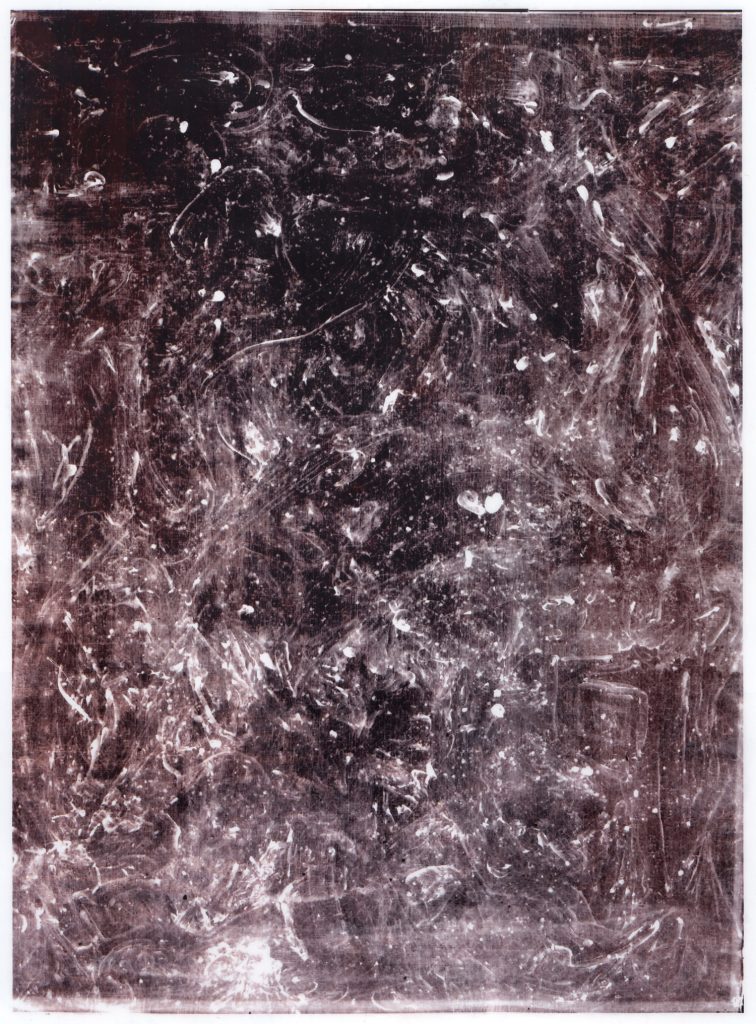Sea Change
Layers of Meaning
Jackson Pollock embedded gravel from a local Long Island gravel pit near his home, and dripped aluminum and black paint per his signature style in Sea Change. Underneath the shiny silver and black drips, flat patterns of salmon, green, purple, and yellow colors hint at a different type of painting.

Jackson Pollock Sea Change and X-radiograph, showing painted forms beneath the surface.
Rectangular spiral forms in the lower right are beneath the finished surface of the painting and can only be seen in this X-radiograph image of Sea Change. They contrast with the loose, random patterns of drips on the paintings surface. Similar forms appear in x-radiograph images of Pollock’s earlier and more symbolic paintings from the 1940s, such as There Were Seven in Eight.

Jackson Pollock, There Were Seven in Eight with superimposed form from Sea Change X-radiograph.
Pollock, Jackson (1912-1956) © ARS, NY. There Were Seven in Eight, ca. 1945. Oil on canvas, 43″ x 8’6″. Mr. and Mrs. Walter Bareiss Fund and purchase. The Museum of Modern Art. Digital Image © The Museum of Modern Art/Licensed by SCALA/Art Resource, NY.
